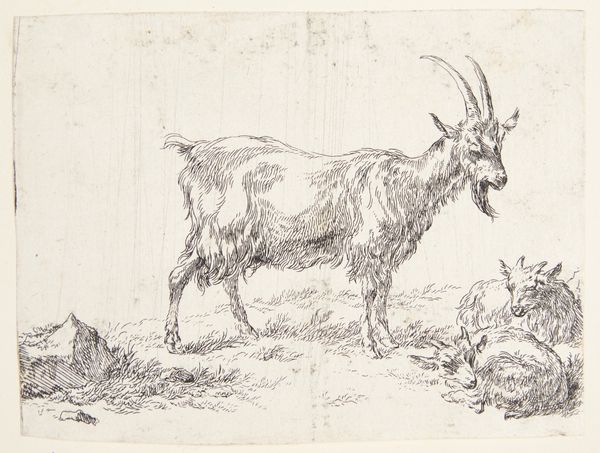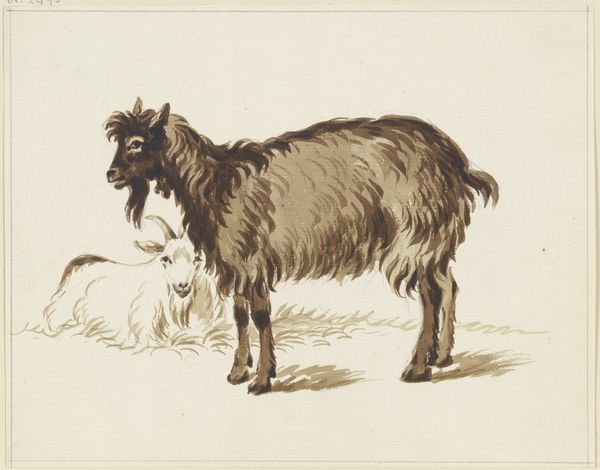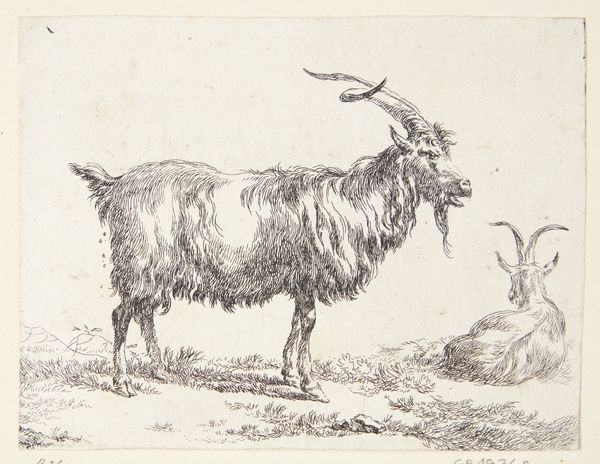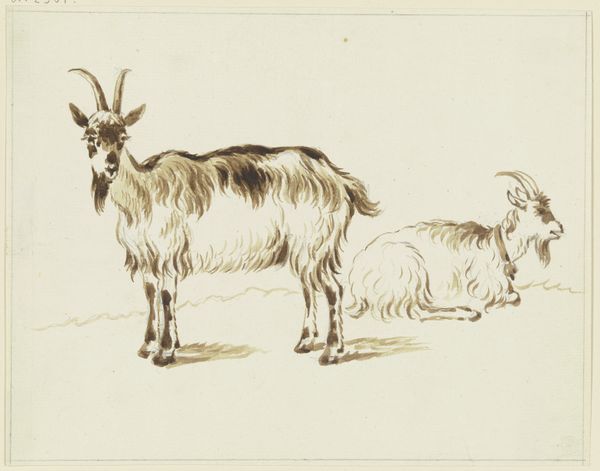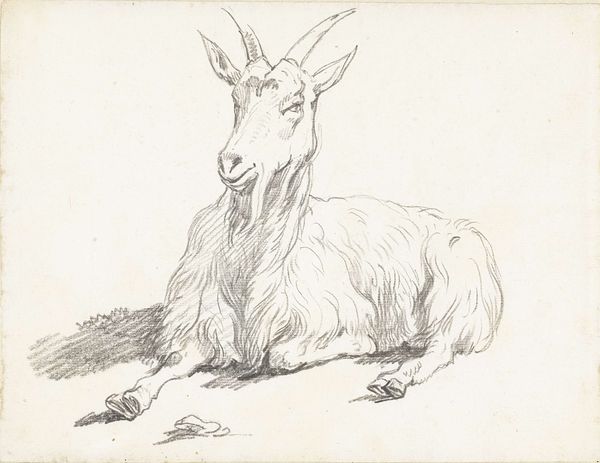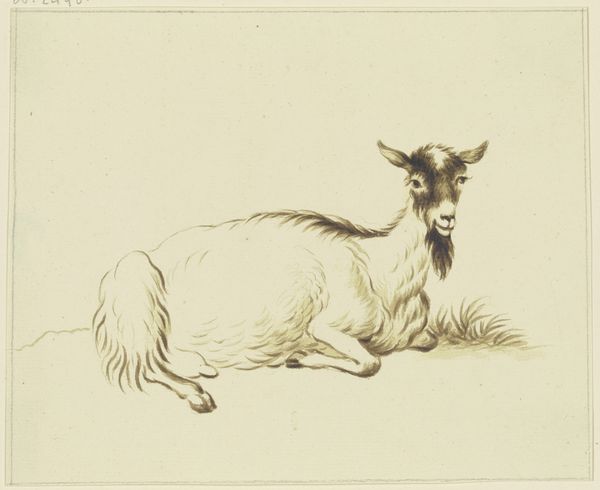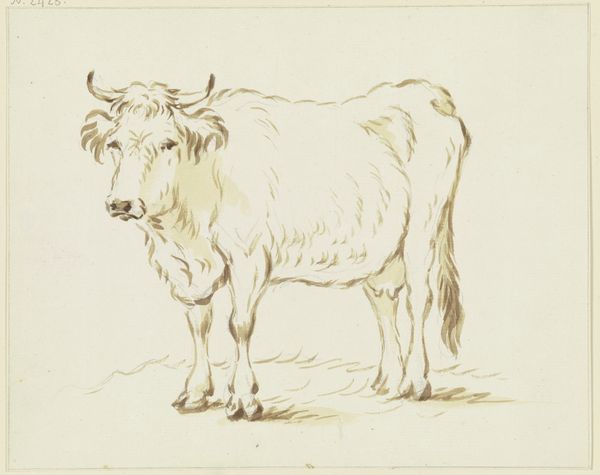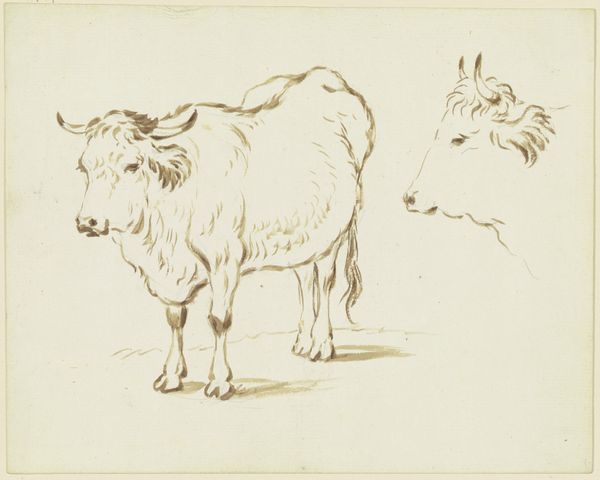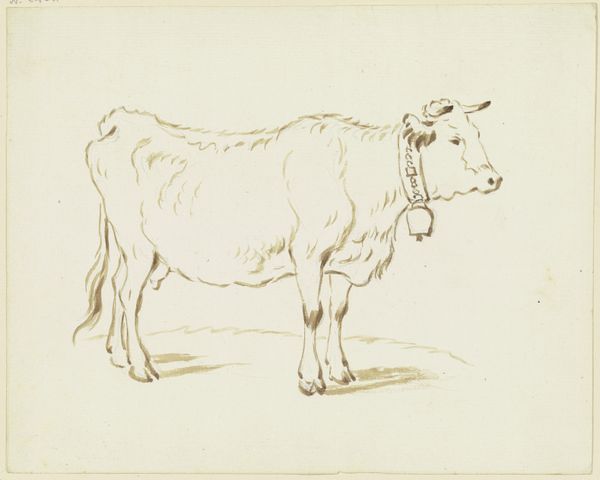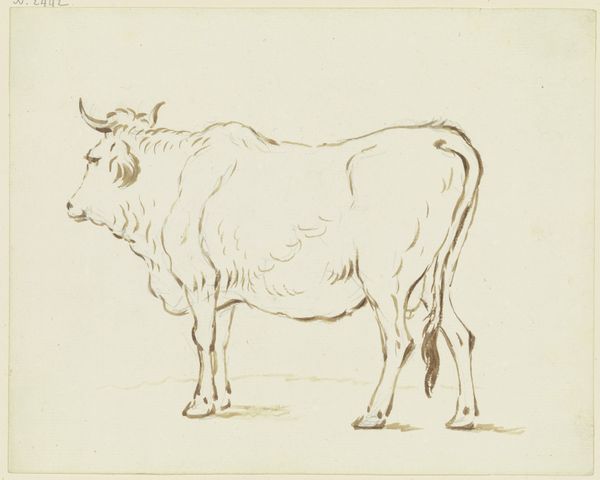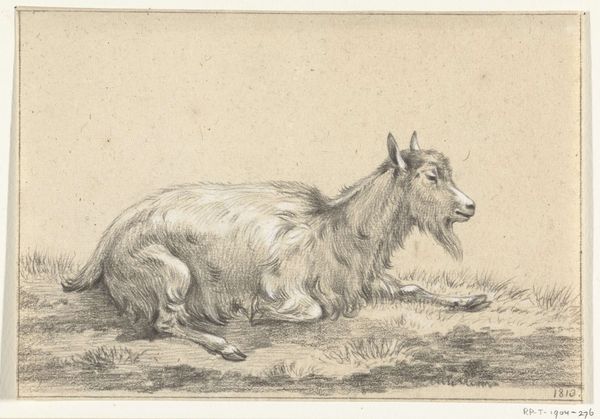
drawing, ink, indian-ink
#
drawing
#
animal
#
figuration
#
ink
#
indian-ink
#
realism
Copyright: Public Domain
Editor: We're looking at "Standing Goat to the Left", a drawing using ink, possibly indian ink, by Friedrich Wilhelm Hirt. It’s currently housed in the Städel Museum. I am struck by the seeming realism, almost photographic quality in rendering the goat's form and texture. What do you notice, and how would you approach interpreting it? Curator: Indeed. From a formalist perspective, it's fruitful to begin with the interplay of line and wash. Observe how the artist has utilized varied line weights to define the contours of the animal, lending it a sculptural presence. Consider, too, how the washes of ink, modulated in tone and density, delineate the areas of light and shadow, articulating volume and texture. Where do your eyes lead you within the composition, and why? Editor: I’m drawn to the detailed rendering of the goat’s head and horns, perhaps because of the greater contrast there. Curator: Precisely. Note how the tight concentration of fine, dark lines in the head draws visual interest, while the washes delineate the bulk of the body. Does this strategic contrast guide your interpretation of the artist's intent? Is this merely a study of an animal, or could the meticulous execution point to a broader symbolic intent through careful artistic representation? Editor: I hadn't considered the possible symbolic dimensions. I was simply captivated by its apparent realism! Your emphasis on formal qualities has broadened my thinking considerably. Curator: Focusing on artistic elements allows for an intricate dialogue between what we observe and what it conveys. I’m pleased this conversation altered how we think about realism in a piece like this one.
Comments
No comments
Be the first to comment and join the conversation on the ultimate creative platform.
